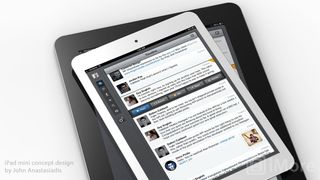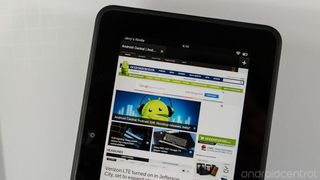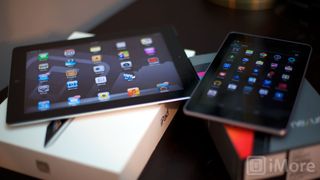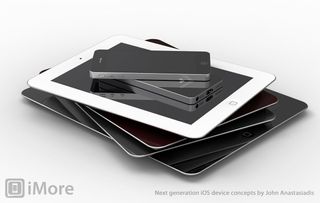Barriers to entry

App.net (ADN), an alternative to Twitter that seeks to better balance the needs of the platform owners with developers and users, saw substantial growth in the last couple of weeks. This is partly due to the arrival of popular clients -- for end users the interface is the app, after all, and familiarity is a huge feature. In addition to attracting attention, these clients reduced the learning curve and the stress level often associated with platform change. ADN also lowered the cost of their service. Initially ADN cost $50 a year for a non-developer account, which was a substantial barrier to entry for anyone but the geekiest of geek users (#227, at your service). While $50 is less than some people spend on fancy caffeinated beverages each month, it still feels like a big up-front expense for something that may or may not provide a significant return. ADN dropped the yearly price to $36, but what's more, they introduced a new $5 monthly option. $5 a month is actually $60 a year, which is more expensive than it was previously, but far more people will be willing to give ADN a chance at $5 than $50, as any substantial period of time beyond a few days blurs towards the amorphous. It's a lower up-front cost, and hence, lower up-front risk.
It's objection handling at the product level, and it's smart business. It's something Apple has been doing going on a decade, and something they're doing especially well with iOS devices right now.
With the iPhone 3G in 2008, Apple dropped the price of the iPhone to $199 on contract. Sure, when you included the typical U.S. 2-year contract, the actual price difference wasn't extreme, but the up-front cost is what mattered. That's why, when the iPhone 3GS was introduced, Apple kept the iPhone 3G around and dropped it to $99, and it's why when the iPhone 4S was introduced, Apple kept the iPhone 3GS around and eventually dropped it to $0 on contract. At "free", the barrier of entry was essentially nothing, and the potential for up-selling to a non-free alternative was tremendous.

Barriers of entry aren't always cost-based either. Windows Phone faces entirely different barriers to entry. First, carriers have to sell iPhone because it's what people want to buy. Carriers want to sell Android because it's what they can do anything they want with. Windows Phone lacks both consumer demand and carrier friendliness. It also has terrible branding. Microsoft's obsession with the "Windows-everywhere" concept has prevented them from presenting their next-generation mobile offerings with anything but old generation trappings. Microsoft is attempting to change the former, the demand, by marketing themselves as a middle ground to consumers, a better experience than Android that doesn't come from Apple. They're also making exclusivity deals with carriers, and offering themselves as a way to hedge against the dominance of either Apple or Google. When it comes to the latter, the branding, they remain oblivious, so partners like Nokia are trying to promote their own brands, like Lumia, above Windows Phone (which likely doesn't make Microsoft happy). Unfortunately, neither Microsoft nor their partners have been able to lower either barrier enough to gain momentum and establish themselves as a serious player in the space. At least not yet.

Microsoft faced somewhat similar barriers to entry when they tried, for a decade, to popularize the idea of Tablet PCs. They didn't face competition from better positioned rivals, but they faced the same obsession with Windows everywhere that created a horrible user experience, and they lacked any clear consumer story or go-to-market strategy, crippling them from the start.
When Apple introduced the iPad, they removed the PC software barrier by using mobile software, namely iOS, and they made an attempt to position it for consumers between the smartphone and the laptop, targeting very specific use cases. That led to Apple achieving huge success and establishing a profitable market. However, the iPad still presented two significant barriers of entry all its own. Firstly, at 9.7-inches it's just too big and two heavy for some users, and second, starting at $500 is still too expensive for others.
Amazon tried to take advantage of this apparent opening with the Kindle Fire, which they initially made smaller at 7-inch and sold cheaply, at $200, hoping content would generate revenue lost to lower (read: almost no) hardware margins. Amazon has since followed the original Kindle Fire up with two new, HD versions, one at the same 7-inch size and the other at a larger, almost 9-inch size. Both are still cheap, and both are still meant to be subsidized by content sales. But by removing one barrier, Amazon has created another. Their business model won't allow them to sell the Kindle Fire in markets that don't also support content sales. While Apple's iTunes has a large international footprint, Amazon's store absolutely does not. In addition, Apple's hardware-centric model allows them to seed markets with product where no iTunes Store yet exists. Amazon literally can't afford to do that, severely limiting their addressable market and hamstringing them from the get go.
Master your iPhone in minutes
iMore offers spot-on advice and guidance from our team of experts, with decades of Apple device experience to lean on. Learn more with iMore!

Google tried something similar with the Nexus 7, although seemingly without the desire to recoup the costs of cheap hardware with content sales. That allowed them to sell into countries Amazon couldn't. However, Google's lack of international content offerings still hurt them in terms of the overall value proposition of their platform. Likewise, their lack of real tablet-class software, and the continued uneven usability of the Android operating system hurt them in terms of the overall experience of their platform. Even people who want an Apple alternative aren't always willing to put up with those two compromises in order to have it.

Apple faces a much easier path to lowering the barriers to entry for the iPad. They just have to make it smaller and lighter, and sell it for less. They've demonstrated time and again that they have both the design and engineering skills to accomplish this, and they've shown with the iPod mini (vs. the original iPod) and the iPad itself (vs. the Mac) that they're willing to cannibalize their own higher end sales if it means they push mass-market adoption of their platforms and prevent competitors from beating them too it.
A smaller, lighter, cheaper iPad mini, sold in almost 100 countries, backed by the content of the iTunes Store, and enveloped by the user experience of iOS solves the barrier to entry problems of the 9.7-inch iPad in a way no competitor can currently match.

Just like the iPod touch removed the "I don't want a phone or contract" barriers, and succeeding generations of iOS have removed the "I need apps and multitasking" barriers, and the iPhone 5 removed the "I need a bigger screen and LTE phone" barriers, Apple has so far resisted the temptation to mistake their product for their business, and, in highly strategic ways, has kept chipping away at the barriers to entry for their products.
If there's a story to the last 5, if not 10 years of Apple, that's it -- removing barriers to entry by making products better and more accessible so they're ultimately more appealing to more people. And the next 5, if not 10, probably won't be much different.

Rene Ritchie is one of the most respected Apple analysts in the business, reaching a combined audience of over 40 million readers a month. His YouTube channel, Vector, has over 90 thousand subscribers and 14 million views and his podcasts, including Debug, have been downloaded over 20 million times. He also regularly co-hosts MacBreak Weekly for the TWiT network and co-hosted CES Live! and Talk Mobile. Based in Montreal, Rene is a former director of product marketing, web developer, and graphic designer. He's authored several books and appeared on numerous television and radio segments to discuss Apple and the technology industry. When not working, he likes to cook, grapple, and spend time with his friends and family.
Most Popular



